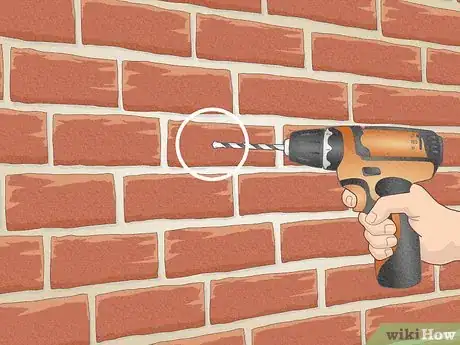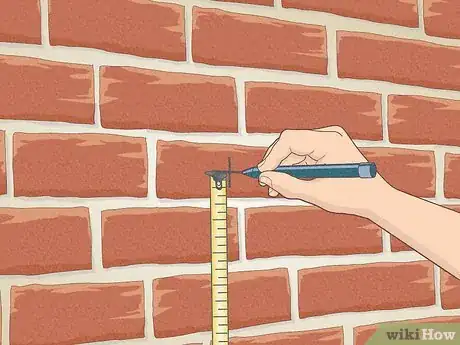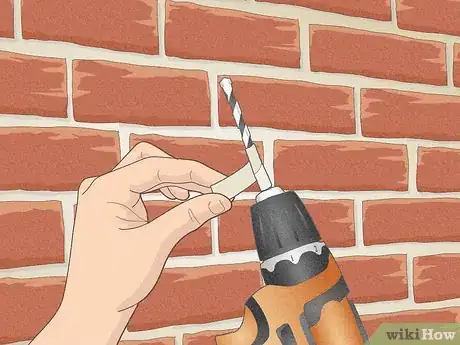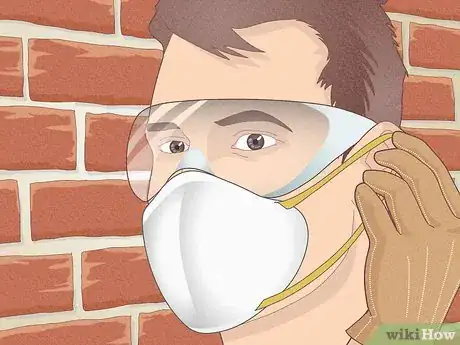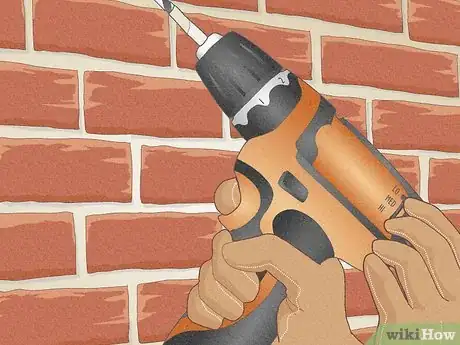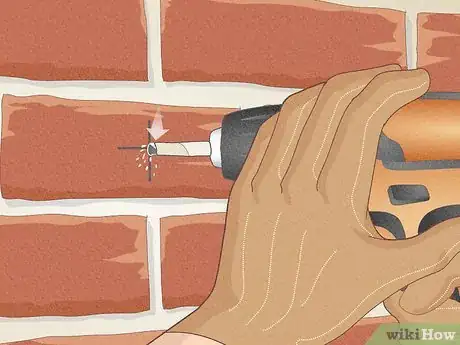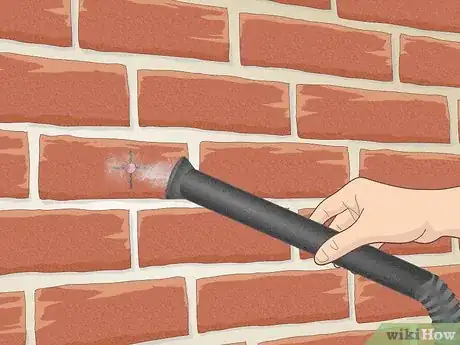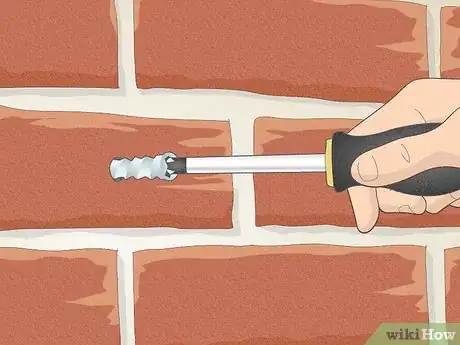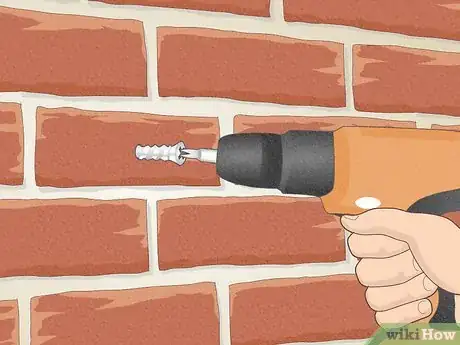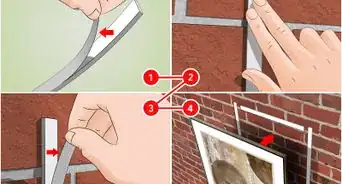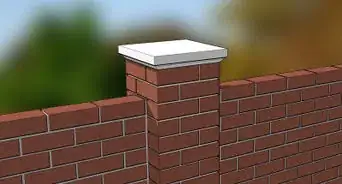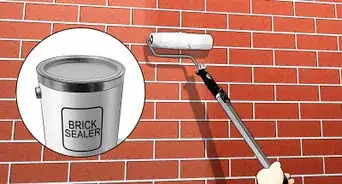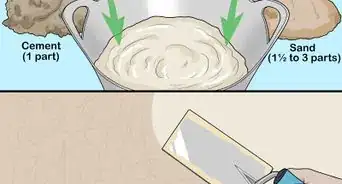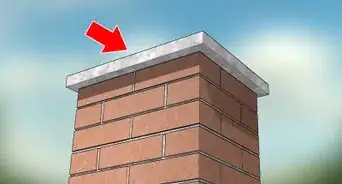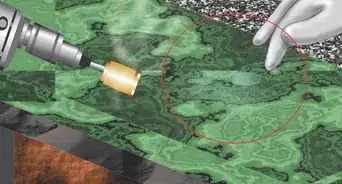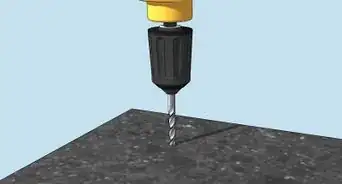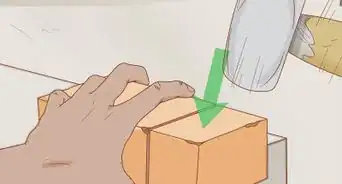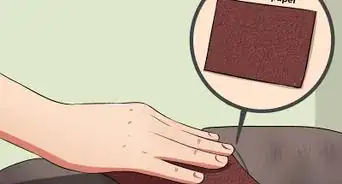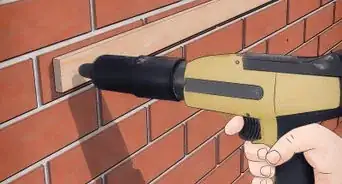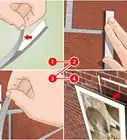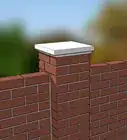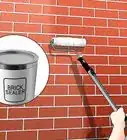This article was co-authored by Jason Phillip and by wikiHow staff writer, Eric McClure. Jason Phillip is a handyman specializing in mounting and hanging objects onto walls. With over five years of experience professionally mounting and installing objects through his company, Jason's Handyman Services, Jason's work includes working with mounting window AC units, designing art gallery walls, installing kitchen cabinets, and replacing light fixtures on drywall, brick, and plaster. He has been rated a "Top Pro" every year since 2016 by Thumbtack for being one of the highest-rated, most popular professionals on Thumbtack.
There are 9 references cited in this article, which can be found at the bottom of the page.
This article has been viewed 51,580 times.
Few DIY projects cause a homeowner to pause quite like the prospect of drilling into brick. The good news is that this isn’t nearly as difficult as it may sound. Drilling into brick isn’t all that different from drilling into drywall, although you do need a special masonry drill bit and probably a wall anchor to keep the brick or mortar from falling apart over time. Still, there’s no reason you can’t safely get this done in just a few minutes!
Steps
Preparation and Equipment
-
1Drill directly into the brick if it’s newer and you’re hanging something heavy. The age-old debate between contractors and DIY enthusiasts is whether to drill into the brick or the mortar. Conventional thinking says that if the brick is on the newer side or you need to hang something weighing more than a few pounds, it’s best to drill directly into the brick.[1]
- Brick is stronger than mortar, so this is ideal if you’re mounting a TV or something like that. Unfortunately, you can’t patch brick the same way you can patch mortar, so just make sure you’re ready to hang the item if you’re drilling straight into the brick.
- If you’re drilling directly into brick, use a wall anchor.[2] A screw may come loose or cause the brick to degrade over time.[3] Wall anchors come in all sorts of shapes and sizes, but they list the weight they can hold and the materials they’re for on the packaging.
-
2Go into the mortar if the brick is older or you’re hanging something light. Say you’re hanging a lightweight wall planter for a small patch of basil or your brick isn’t in the greatest shape. You should drill into the mortar.[4] Mortar disintegrates faster than brick once drilled, but you can always patch it in the future.[5]
- As bricks age, they tend to become softer. If the bricks aren’t in the best shape, drilling into a brick may cause structural damage to the wall.
- If you’re going into the mortar and you aren’t hanging anything heavy, you can just use a drywall or masonry screw. You don’t need a wall anchor.
Advertisement -
3Measure and mark the location where you want to drill. Grab a permanent marker to mark the location where you want to drive your screw. If you’re hanging anything that requires more than one screw, measure the distance between the screw slots and use that measurement to determine where your screws will go.[6]
-
4Put a drill bit designed specifically for masonry into your drill. You must use a masonry bit to drive a hole in the brick or masonry (carbide masonry bits are ideal).[7] The size of the drill bit needed depends on the size of your anchor (or screw if you aren’t using an anchor). Hold the pilot bit up to your anchor. If the threads on the anchor barely stick out past the sides of the drill bit, it should work.[8]
-
5Wrap a piece of tape around the drill bit where you’ll need to stop drilling. Hold the screw or anchor up to the tip of your drill bit so they’re parallel to one another. Wrap a piece of electrical or painter’s tape around the drill bit just above the very edge of your anchor or screw. This will give you a reference point for when you need to stop drilling.[11]
- If you have a drill stop, feel free to use that instead. The tape trick is totally fine and will keep you from spending money on a bit of gear you’ll likely never use again.
-
6Put on safety goggles, gloves, and an N95 respirator. Drilling into brick or mortar may send bits of rock flying all over the place, and it will knock all kinds of nasty dust into the air. Throw on some safety goggles, put on some leather gloves, and wear a respirator. This will keep you safe while you’re drilling into the brick.[12]
- If you’re doing this outside and you’re only drilling one hole, feel free to wear a regular dust mask.
Pilot Hole
-
1Set your drill to the lowest speed and highest torque setting.[13] You want torque and control here, and a higher drill speed may cause the bit to slide off of the wall. This can be dangerous if you don’t have total control over the drill. Turn the drill speed all the way down to prevent this. If you have a torque setting on your drill, turn the torque up as high as it goes.[14]
- The torque setting is often referred to as the power setting. If your drill has one of these, it’s probably the sliding tab on the top of the drill. The “1” is usually the high torque setting.[15]
-
2Position the drill bit so it’s perpendicular to the wall. Hold the pilot bit up to the location you’ve marked and rest it against the wall. Line your drill up so that the pilot bit sits perpendicular to the surface you’re drilling into.[16]
- Really take your time to make sure the drill is perpendicular. There’s going to be a fair bit of resistance once you start drilling, so it’s key you know where you have to hold the drill while you pull the trigger.
-
3Hold the drill with both hands and use a bit of force to start drilling. Grip the drill firmly and pull the trigger. As soon as the tip of the drill bit catches on the brick or mortar, push the drill forward with a firm but controlled amount of force to push the bit in further.[17]
- If the drill bit skirts off of the wall, release the trigger and try again. You have to hold the drill totally steady for the bit to catch.
-
4Guide the bit all the way to the piece of tape on your bit. Continue pushing the drill bit into the wall while you’re holding the trigger down. Keep an eye on the piece of tape that you put on the drill bit and release the trigger once you’ve reached the edge of your tape. Then, reverse the direction of the drill, pull the trigger, and slowly guide the bit out of the wall.[18]
Wall Anchor or Screw
-
1Vacuum the hole to remove any dust. Brick and mortar aren’t hollow, so any dust or chunks of brick you dislodged with your pilot bit are just sitting in that hole. Grab a vacuum and hold the hose up to the hole. Set the vacuum to the highest suction level and turn the vacuum on to pull out any debris.[19]
- This is the ideal time to vacuum up any brick or mortar dust on the ground as well!
-
2Push the wall anchor into place if there’s no threading. If you’re using a wall anchor with parallel tabs on it, or the side is totally smooth, simply push the anchor directly into the pilot hole. If it gets stuck or the hole isn’t big enough to get the anchor in all the way, grab a hammer and just gently tab the back of the anchor to push it in.[20]
- If you’re drilling directly into the brick or you’re drilling into the mortar and hanging something heavier than 1–2 pounds (0.45–0.91 kg), you must use a wall anchor.
- Continue pushing or tapping your anchor into the hole until it’s flush with the surface of the brick.
- Install the screw into the anchor using a regular screwdriver.
-
3Use the drill or a screwdriver to install threaded anchors. If you’re using a wall anchor with threading, turn your drill to the lowest setting and slowly drive it into the pilot hole. If you want to be extra careful, you can use a screwdriver if you prefer, although this is going to be pretty tough on your forearms! Continue driving your anchor into place until it’s flush with the wall.[21]
- If you have a hex anchor, use a socket wrench to install it in the wall instead of a drill or screwdriver.
- Install your screw in the anchor with a standard screwdriver.
-
4Drill your screw into place if you aren’t using an anchor. If you are just hanging something light on the brick and you went into the mortar, you may not need an anchor. Simply put a regular drill bit into your drill and carefully drive the screw into the hole you drilled.[22]
- You may be able to use a screwdriver, but it’s probably going to be pretty tough.
- If you’re hanging something, keep in mind that you’ll need an extra 1⁄4–1 in (0.64–2.54 cm) of the screw sticking out of the wall!
Expert Q&A
-
QuestionHow do you get a drill bit unstuck?
 Jason PhillipJason Phillip is a handyman specializing in mounting and hanging objects onto walls. With over five years of experience professionally mounting and installing objects through his company, Jason's Handyman Services, Jason's work includes working with mounting window AC units, designing art gallery walls, installing kitchen cabinets, and replacing light fixtures on drywall, brick, and plaster. He has been rated a "Top Pro" every year since 2016 by Thumbtack for being one of the highest-rated, most popular professionals on Thumbtack.
Jason PhillipJason Phillip is a handyman specializing in mounting and hanging objects onto walls. With over five years of experience professionally mounting and installing objects through his company, Jason's Handyman Services, Jason's work includes working with mounting window AC units, designing art gallery walls, installing kitchen cabinets, and replacing light fixtures on drywall, brick, and plaster. He has been rated a "Top Pro" every year since 2016 by Thumbtack for being one of the highest-rated, most popular professionals on Thumbtack.
Handyman You can turn the front of almost all drills these days to easily loosen it up.
You can turn the front of almost all drills these days to easily loosen it up. -
QuestionCan you mount something without drilling?
 Jason PhillipJason Phillip is a handyman specializing in mounting and hanging objects onto walls. With over five years of experience professionally mounting and installing objects through his company, Jason's Handyman Services, Jason's work includes working with mounting window AC units, designing art gallery walls, installing kitchen cabinets, and replacing light fixtures on drywall, brick, and plaster. He has been rated a "Top Pro" every year since 2016 by Thumbtack for being one of the highest-rated, most popular professionals on Thumbtack.
Jason PhillipJason Phillip is a handyman specializing in mounting and hanging objects onto walls. With over five years of experience professionally mounting and installing objects through his company, Jason's Handyman Services, Jason's work includes working with mounting window AC units, designing art gallery walls, installing kitchen cabinets, and replacing light fixtures on drywall, brick, and plaster. He has been rated a "Top Pro" every year since 2016 by Thumbtack for being one of the highest-rated, most popular professionals on Thumbtack.
Handyman It depends on the weight of the object. There are adhesive strips, but they don't usually hold a lot of weight. If you don't wan't or can't drill, but can use a nail, I'd recommend that.
It depends on the weight of the object. There are adhesive strips, but they don't usually hold a lot of weight. If you don't wan't or can't drill, but can use a nail, I'd recommend that.
Things You’ll Need
- Measuring tape
- Permanent marker
- Masonry drill bit
- Cordless drill or power drill
- Wall anchor
- Drywall or masonry screw
- Protective goggles
- Leather gloves
- N95 respirator or dust mask
- Electrical tape or painter’s tape
References
- ↑ https://www.bobvila.com/articles/how-to-drill-into-brick/
- ↑ Jason Phillip. Handyman. Expert Interview. 2 July 2020.
- ↑ https://www.architecturaldigest.com/story/wall-hanging-myths-busted
- ↑ https://www.bobvila.com/articles/how-to-drill-into-brick/
- ↑ https://www.thisoldhouse.com/masonry/22423298/how-to-drill-into-brick
- ↑ https://www.thisoldhouse.com/masonry/22423298/how-to-drill-into-brick
- ↑ https://www.bobvila.com/articles/how-to-drill-into-brick/
- ↑ https://www.apartmenttherapy.com/how-to-choose-correct-drill-bit-36894049
- ↑ Jason Phillip. Handyman. Expert Interview. 2 July 2020.
- ↑ https://www.bobvila.com/articles/how-to-drill-into-brick/
- ↑ https://youtu.be/qVroeDTh7yc?t=97
- ↑ https://www.bobvila.com/articles/how-to-drill-into-brick/
- ↑ Jason Phillip. Handyman. Expert Interview. 2 July 2020.
- ↑ https://www.bobvila.com/articles/how-to-drill-into-brick/
- ↑ https://www.popularmechanics.com/home/tools/how-to/g2661/how-to-adjust-a-drill-driver/
- ↑ https://www.bobvila.com/articles/how-to-drill-into-brick/
- ↑ https://www.thisoldhouse.com/masonry/22423298/how-to-drill-into-brick
- ↑ https://youtu.be/qVroeDTh7yc?t=161
- ↑ https://www.thisoldhouse.com/masonry/22423298/how-to-drill-into-brick
- ↑ https://youtu.be/qVroeDTh7yc?t=178
- ↑ https://www.thisoldhouse.com/masonry/22423298/how-to-drill-into-brick
- ↑ https://www.thisoldhouse.com/masonry/22423298/how-to-drill-into-brick
